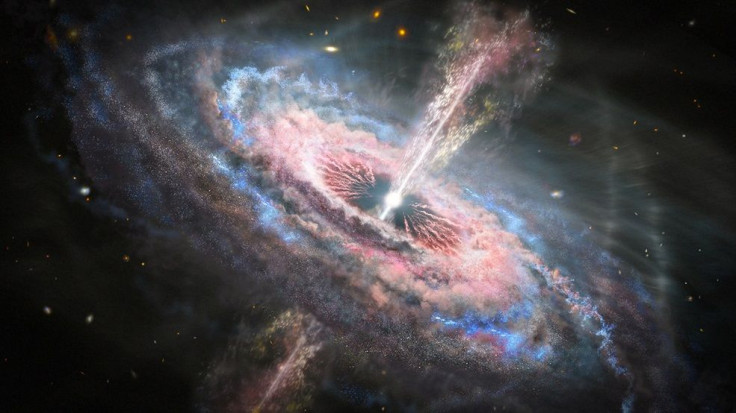Scientists Find Chemical Traces Of One Of Universe's First Stars
KEY POINTS
- The ULAS J1342+0928 quasar was studied by a team of researchers
- It is the second oldest quasar to be detected to date
- The researchers found high levels of iron and low levels of magnesium in the quasar
Scientists may have found remains of one of the first stars of the universe in the second most distant quasar to date.
A study, published in the Astrophysical Journal, found chemical traces of a star that exploded 13.1 billion years ago in a quasar named ULAS J1342+0928. These chemical traces are in line with the predictions about one of the first stars of the universe.
The star exploded in a supernova, leaving nothing behind. However, its chemical fingerprint scattered across the center of its host galaxy.
The team of researchers behind the study, which included co-authors Yuzuru Yoshii and Hiroaki Sameshima of the University of Tokyo, went through old data from the Gemini North radio telescope in Hawai'i from 2017 and 2019. It was from this set of data that the telescope first measured the infrared glow of gas falling into the oldest supermassive black hole ever discovered.
An actively feeding supermassive black hole is surrounded by a bright spiraling disk of gas. The disks that release the most energy are called quasars. The ULAS J1342+0928 quasar, the one which was studied by the researchers, glows thousands of times brighter than the entire milky way galaxy.
This quasar is very old even on the cosmic scales — it is 13.1 billion years away. In other words, the quasar is visible to astronomers as it was about 700 million years after the Big Bang. It is also the second oldest quasar to be detected to date, the first being P172+18.
Each generation of star differs slightly in its chemical composition. For instance, the chemical fingerprint of the universe's first stars should vary from that of a star like our Sun.
In their study, the researchers found an unusual combination of chemical traces in the distant quasar. The researchers found high levels of iron and low levels of magnesium. This is similar to what computer simulations predict to find in a first-generation star about 300 times the mass of our Sun if it exploded. The resulting supernova would be so rare that astronomers have neither encountered it nor found any evidence of it.
When stars are said to go supernova, astronomers refer to stars that are eight times the size of our Sun. However, stars more than 150 times the size of our Sun meet a violent end. The destruction from their explosion is so powerful that nothing is left intact.
The time coinciding with the formation of the first stars is quite a mystery for scientists still. Even our strongest telescopes like the James Webb telescope cannot home in on the universe's oldest stars. The reason is that these stars are very far, relatively faint and blocked from view by thick clouds of hydrogen.
Finding chemical fingerprints of these stars on objects that astronomers can observe could help us peek into our distant past.

© Copyright IBTimes 2025. All rights reserved.





















